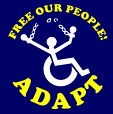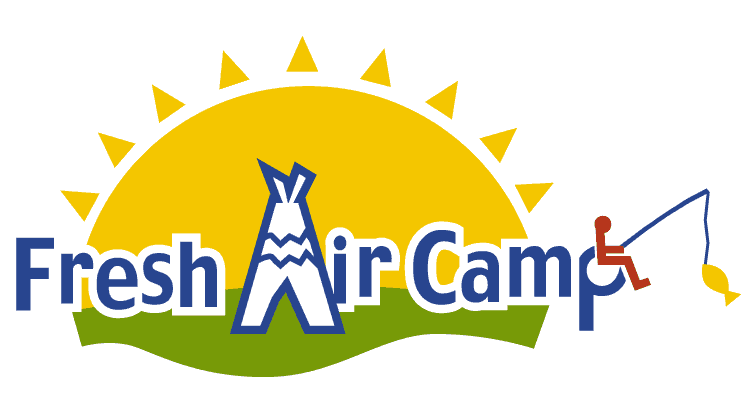IVUN
INTERNATIONAL VENTILATOR USERS NETWORK
an affiliate of Post-Polio Health International
CONNECTING
VENTILATOR USERS,
HEALTH PROFESSIONALS,
AND INDUSTRY
IVUN
INTERNATIONAL VENTILATOR USERS NETWORK
an affiliate of Post-Polio Health International
CONNECTING
VENTILATOR USERS,
HEALTH PROFESSIONALS,
AND INDUSTRY
VENTILATOR-ASSISTED LIVING
This issue sponsored by:



VOLUME 30, NUMBER 1
FEBRUARY 2016
Custom-made mask: benefits, time and cost
Meet Jean Graber
Jean was born in 1946 and had high spinal and bulbar polio in 1952. She was hospitalized for three months at the Hutchinson Hospital (Kansas). She spent six weeks in an iron lung.
After recovery, Jean’s “personal best” was to be able to walk. Her legs were not affected. Her left arm and hand were completely paralyzed. She had no lifting ability of her upper right arm, but had some movement and strength from the elbow down, including hand.........MORE
International Ventilator Users Network (IVUN), part of Post-Polio Health International (PHI), announces that the review panel of its Research Fund recommended a two-year study involving the CoughAssist to the PHI Board of Directors, which was approved.
The CoughAssist (Philips Respironics) is a device that helps to clear secretions from the lungs. It was developed in the early 1990s by the JH Emerson Company as the In-Exsufflator. The device was reminiscent of the Cof-flator made in the late 1950s and early 1960s and used by polio survivors. Currently, there are several companies that make similar devices worldwide..........MORE
ADDITIONAL SECTIONS
Vent Users Speak
Answer questions; learn from others.
Advocacy
Educate, discuss, take action.
Networking
Sharing the work of others.
Recent Relevant Publications
Summaries, links to selected professional, disability, disease journals and newsletters.
Educational Opportunities
Conferences and webinars for health professionals and ventilator users.
Industry
The business of living with a ventilator.
Supported by:
Ventilator-Assisted Living
Vol. 30, No. 1, February 2016
Editor: Joan L. Headley
Designer: Brian Tiburzi
ISSN 1066-534X
© 2016 Post-Polio Health International.
Permission to reprint must be obtained from Post-Polio Health International (PHI) at info@post-polio.org.
Ventilator users, health professionals, non-profits, company representatives – send comments and updates to info@ventusers.org.
Custom-Made Mask: benefits, time and cost
Meet Jean Graber
Jean was born in 1946 and had high spinal and bulbar polio in 1952. She was hospitalized for three months at the Hutchinson Hospital (Kansas). She spent six weeks in an iron lung.
After recovery, Jean’s “personal best” was to be able to walk. Her legs were not affected. Her left arm and hand were completely paralyzed. She had no lifting ability of her upper right arm, but had some movement and strength from the elbow down, including her hand.
It was not until 1984 that she started using the pulmowrap (see photo) at night to assist with her breathing. The up and down movement hurt her back and neck. It did not allow independence because her husband had to put her in and out of it each day. Fortunately, he learned to sleep through the loud sweeper sound of the motor and the consistent up and down movement.
Jean was a remedial reading and math teacher in grades K-8 for 38 years, retiring in 2005. She lives in Pretty Prairie, Kansas, with Curtis, her husband of 46 years.

IVUN: Thank you for sending the photographs of your new custom-made interface. Is this your first one? If not, when did you first use a custom-made mouthpiece?
No, this is my fifth (I think) mask. I got my first one in 1987. I heard respiratory therapist Sue Sortor (now Leger) speak about a strap-free mask that she was developing at the 1987 Post-Polio Health International Conference (then Gazette International Networking Institute). Later that year, I went to Dallas, Texas, becoming one of her trial users. Most of the fine tuning took place during the nights because that’s when I needed to use it – for sleeping.
As she made progress with materials and custom-fitting procedures, I was part of the process! Each new mask was smaller, more streamlined and made out of different and better materials. Sortor Leger moved to France but had trained others before she left. Wilma Breaux, RRT, UT Southwestern Sleep & Breathing Disorders Center, is the one who helps me now.
IVUN: Before we talk more about the new interface, what ventilator do you use now? In what mode?
I use a Pulmonetics 800 (CareFusion), with no oxygen and in assist-control mode. I need something to breathe in and out for me as the iron lung did 60-plus years ago. With my mask, I can sleep on my back or my left side, because the port is on the right.
IVUN: There are many, many interfaces available. Couldn’t you find one that works for you?
No. I want a mask I can get in and out of by myself. I can lift this device to my mouth with my right arm. This strap-free mask gives me what I’ve strived for all my post-polio life --- independence! Why would I choose anything different? And, I honestly haven’t looked lately.
IVUN: Would you please explain what we are seeing in the photo? What hooks up to what?
The first photo is the view I have when putting it in my mouth. You can see the bite wings and the port to the right that hooks to my ventilator. The front view shows the metal structure with a now-closed hole that was used to attach the bite wings to the mask.


IVUN: Let’s talk about the process of making the device. Who made it? How many visits did you make to the dentist’s office before the final product was complete?
We usually allow four or five days in Dallas when we go to make a mask. Now we stay in a motel except me for the nighttime monitoring. (I used to stay in the hospital the entire time.)
W. Keith Thorton, DDS, Sleep Well Solutions, crafts the mask and Wilma Breaux, RRT, assists with the nighttime monitoring, which is so important before we drive back to Kansas.
I have impressions made of my upper and lower teeth by my local dentist and send them ahead so the bite wings can be ready when I arrive. On the first day, I am at the hospital in the iron lung so I am as relaxed as possible. (The William P. Clements Jr. University Hospital, which is nearby, has a working iron lung.) They make an impression of my nose, mouth and chin. It hardens within minutes.
After a day, I go back to complete the mask. The bite wings are placed with my mouth in a relaxed position (as if sleeping) and then attached together. Next, the mask is placed over my face and through an opening in the center of the mask, the sealed bite wing is positioned as comfortable and useable as possible.
The setup is tested to find any leaks around the edges, which are immediately fixed. I spend that night in the hospital sleep lab to determine if leaks develop and if I am adequately ventilated. If there are new leaks, they are fixed the next day and another night is spent in the sleep lab checking again for leaks and adequate ventilation. (In the early years, someone sat by my bed as I slept checking for leaks. These were corrected on the spot.)
IVUN: Does Medicare or insurance pay for a custom-made interface?
Medicare or insurance does not cover costs, but I can deduct travel and lodging expenses. Insurance does cover the costs of the sleep lab monitoring.
IVUN: Approximately, how much does a custom-made mask cost?
It varies, I am sure, but mine can be as much as $5,000.
IVUN: That is a considerable sum of money. Is it worth it for you? Why?
As I’m aging, and I spend more time on the vent resting my own breathing muscles – in the car, on the computer, watching TV, etc. I use a flexible bent-tube pipe held in my mouth with my teeth and lips during the day.
I do IPPB treatments regularly during the day – some with albuterol and some with ipratroprium bromide. These treatments also help keep me breathing independently.
This type of night-time mask has worked well for me since 1987. I like not having any straps on my head because I have weak neck muscles. My husband cleans the mask regularly in a gentle soap and then vinegar water just as he does the tubing for my IPPB treatments.
We have had no real issues or emergencies, and I have been hospitalized only once since 1987. I believe the mask’s consistency of ventilation has been a major reason.
Also, my pulmonologist has learned that I do know my body, and he does listen to me. His support helped me get this device which so much contributes to my independence.
Organization Awards $100,000 for Study in 2016-2017
International Ventilator Users Network (IVUN), part of Post-Polio Health International (PHI), announces that the review panel of its Research Fund recommended a two-year study involving the CoughAssist to the PHI Board of Directors, which was approved.
The CoughAssist (Philips Respironics) is a device that helps to clear secretions from the lungs. It was developed in the early 1990s by the JH Emerson Company as the In-Exsufflator. The device was reminiscent of the Cof-flator made in the late 1950s and early 1960s and used by polio survivors. Currently, there are several companies that make similar devices worldwide.
Submitted by Louise Rose, RN, MN, PhD, Associate Professor, Lawrence S. Bloomberg Faculty of Nursing, University of Toronto, Ontario, Canada, the project title is “Cough Assist: use education needs, health service utilization and outcomes.” Rose also holds the TD (TD Bank Group) Nursing Professor in Critical Care Research at Sunnybrook Health Sciences Centre, Toronto.
Her co-lead researcher is Mika Nonoyama, RRT, PhD, Assistant Professor at the University of Ontario Institute of Technology and a lecturer in the Department of Physical Therapy at the University of Toronto. Nonoyama also holds a project investigator position at SickKids, Toronto.
In 2014, the publically funded Provincial (Ontario) Cough Assist Program was established. The program makes available the device and associated equipment free of charge to ventilator-assisted individuals living at home. A pulmonary specialist's evaluation is required to determine that the device is beneficial for that individual. These individuals, and those new to the program, will be involved in the research, as well as caregivers.
The research questions include: What education, both initial and ongoing, is needed to assure use of the device? What effect has the availability of the device had on emergency room visits, hospital admissions, family physician, clinic and specialists visits, e.g., health service utilization and associated costs? What effect has it had on health-related quality of life and the individuals’ symptoms, e.g., shortness of breath, fatigue, etc. How does the actual use of the device compare to its prescribed use?
Rose and Nonoyama have lined up an impressive list of experts in noninvasive ventilation and cough augmentation, in both the adult and pediatric populations. Other institutions involved include the Rehabilitation and Sleep Laboratory of the Ottawa Hospital; Long-Term Ventilation Centre of Excellence at West Park, Toronto; Home Ventilation Program SickKids, Toronto; Children’s Hospital of Eastern Ontario Research Institute, Ottawa; Sunnybrook Health Sciences Centre, Toronto; and the University of Western Ontario, London.
In addition, the researchers have assembled experts in knowledge translation; health services and outcomes; qualitative methods of research that include participant observation and interview analysis.
The researchers project that the results will generate a new understanding of the educational needs of users of the CoughAssist, so improvements can be made in service delivery. They also anticipate that the results will validate the use of the device and will offer justification for similar programs around the world, providing greater access to the device, as well as improved symptom relief and quality of life for more ventilator users living at home.
Chair of PHI’s Research Committee, Daniel Wilson, states, “The review panel felt that even though the device has been used by patients with neuromuscular respiratory conditions for many years, evidence about efficacy is largely anecdotal. There is also little information about obstacles to its use.”
The award of $100,000 will be for activities completed in 2016 and 2017.
Vent Users Speak
I'll Be Back in the Morning
“I have worried for years about the number of people with disabilities, especially kids, who never had a chance or opportunity to reach their potential because of all the ‘doomsayers’ with authority and (assumed) expertise behind the opinions they offer.”
-Audrey King, 1952 polio survivor and ventilator user
ADA Fan Cam
Greg Smith, aka The Strength Coach, Mississippi, has begun work on organizing the Major League Baseball Americans with Disabilities Act Cam initiative for 2016.
GOAL #1: To have ALL MLB Baseball television broadcasts mention the anniversary of the ADA on July 26, 2016, showing camera shots of fans with disabilities enjoying baseball.
GOAL #2: To encourage baseball broadcasters to include people with disabilities as a part of the crowd in fan cam shots throughout the season.
Visit www.Facebook.com/ADAFanCam for the next step, which will probably involve a teleconference.

Nick Dupree
Nick Dupree, New York, was selected as one of seven recipients of the 2015 Wynn Newhouse Award for disability arts.
“I've always made paintings that look at the juxtaposition of supposed opposites that become entwined: cold and hot, artificial and organic.
"In the painting below, Self-portrait from side, the ventilator tubing is part of the human, the same colors, part alive. With its expressionist brushstrokes and colors, the tubing becomes the same substance, the artificial becomes organic. Since 2011, I've increasingly focused on painting, self-portraits, and portraiture, like the Faces series (2014) documenting people with disabilities and others in community in a unique and colorful style.
“When I was 9-years old, a botched back surgery left me in horrible pain and clinging to life in the hospital. To help myself cope, I began drawing and coloring 'Superdude' comic books with pens and crayons. I had always created drawings, and my Mom always said that even the earliest scribblings were 'sequential,' a panel or snapshot of people and things amid intense change.”
Click here to read more about Nick and view more paintings.
In 2006 the Samuel I. Newhouse Foundation established the Wynn Newhouse Awards, a program that provides grants to artists of excellence who happen to have disabilities. The Foundation currently allocates $60,000 per year for these Awards. These funds will be distributed among winners at the discretion of the five invited judges on the selection committee. Works by winning artists will also be on exhibition at the Palitz Gallery, at the Joseph I. Lubin House at 11 East 61st Street in New York.

Advocacy
West Virginia Law Forces Long-Term Ventilator Patients Out of State
PART I: West Virginia Law Forces Long-Term Ventilator Patients Out of State
PART II: WV Law Forces Long-Term Ventilator Patients Out of State
PART III: Legislators and Health Care Specialist Address Need for Ventilators
Travel with a Vent
IVUN is working with the Paralyzed Veterans Association (PVA), who is addressing many issues related to flying, on the problems that arise when flying with a breathing device. The current information can be accessed at US Government Publishing Office, Electronic Code of Regulations, Title 14 → Chapter II → Subchapter D → Part 382 → Subpart I → §382.133. TSA has rules that are to be followed, too.
AirAccess30.org, a project of the PVA, offers people with disabilities a forum to share air travel experiences.
If you have specific concerns regarding ventilators, send them to info@ventusers.org.
From ADAPT about the Disability Integration Act
On December 18, 2015, Senator Chuck Schumer (D-NY) introduced the Disability Integration Act. This legislation (S.2427) is intended to assure that people with disabilities can live in the community rather than be forced into nursing facilities and other institutions.
This ground-breaking legislation establishes statutory civil rights language

- comparable to the ADA - which requires public entities and Long Term Service and Supports insurance providers to change their policies, provide community-based services first, and offer HCBS (Home and Community-Based Services) to people currently in institutions.
Learn more about the legislation here.
US Election 2016 Voter Guide
#CripTheVote is a nonpartisan campaign to engage both voters and politicians in a productive discussion about disability issues in the United States, with the hope that disability takes on greater prominence within the American political landscape.
This is intended as a resource for voters with disabilities to prepare for voting and learn more about the 2016 General Election on Tuesday, November 8.
The group is organizing #CripTheVote Twitter chats. Follow them on Twitter to learn the date and time of the next one.
REV UP America - Make the Disability Vote Count
REV UP, which stands for Register, Educate, Vote, Use, (your) Power, is a campaign that recognizes that there is a disability vote and that people with disabilities and their supporters will vote for candidates who address issues of concern to the disability community and who reach out to get that vote. The American Association of People with Disabilities (AAPD) serves as the national coordinator of the REV UP Campaign.
Networking
Camps for Ventilator-Assisted Children
CHAMP CAMP
PA VENT CAMP
CHAMP Camp 2016 will be June 19-23, 2016 at Bradford Woods. Counselors may apply here. Campers can apply here. All applications are due by March 1, 2016. Make sure to get in on time and we hope to see you at camp!
FRESH AIR CAMP
PA Vent Camp is held annually at Camp Victory in Millville, PA. June 25-30 are this year’s dates.
VACC CAMP
Fresh Air Camp is scheduled for June 12-17, 2016 at Camp Cheerful, Strongsville, Ohio.
Camp Inspiration is specifically for bipap and ventilator-assisted children at Double H Ranch, Lake Luzerne, New York. It is held annually at the beginning of June.
CAMP INSPIRATION
2016 will be VACC Camp's 30th Anniversary. The camp always takes place March 19-25.
TRAIL'S EDGE CAMP
Trail’s Edge Camp is a week long summer camp for children who are ventilator-assisted. 2016's camp will be held June 5-10 at the Fowler Center for Outdoor Learning, a beautiful barrier-free camp on 200 acres in Mayville, Michigan.
CAMP PELICAN
Camp Pelican, the New Orleans area, hosts a week-long overnight resident camp for children with pulmonary disorders-such as but not limited to severe asthma, cystic fibrosis, tracheotomy and ventilator assisted children. May 29-June 4 are the dates for 2016.
CHEST Foundation Grants Are Now Available
The CHEST Foundation is accepting applications for research projects, community service projects, and distinguished scholar research projects. Learn more.
Obsolete Equipment Available
IVUN has been notified that a PVV and an LP3 are available for free if the shipping is paid from Florida. A gentleman in Houston has 3 LP-10s he would like to give away. If you are interested in any of these obsolete machines, contact info@ventusers.org.
Recent Relevant Publications
"People with a thoracic SCI at or above level 6 (T6) are at risk for autonomic dysreflexia. People with injury levels below T6 may also be at risk for AD in some rare situations.”
The NIDILRR-funded Model Systems Knowledge Translation Center (MSKTC) has released a new factsheet, Autonomic Dysreflexia. The factsheet, available in English and Spanish (PDF), provides information about autonomic dysreflexia after spinal cord injury, what can trigger it, and how to recognize and manage the condition.
“Pearson (chi-square test) and partial correlation coefficients that used data collected from 73 polio survivors showed that obesity had a negative correlation with pulmonary function.”
Obesity and Pulmonary Function in Polio Survivors by Han SJ, Lim JY, Suh JH, Ann Rehabil Med. 2015 Dec; 39(6):888-96.
“Antibiotics are often inappropriately prescribed for patients with acute respiratory tract infection (ARTI). This article presents best practices for antibiotic use in healthy adults (those without chronic lung disease or immunocompromising conditions) presenting with ARTI.”
Harris AM, Hicks LA, Qaseem A, for the High Value Care Task Force of the American College of Physicians and for the Centers for Disease Control and Prevention. Guidelines seek to help physicians avoid overuse of antibiotics for respiratory problems in Ann Intern Med. [Epub ahead of print 19 January 2016].
Educational Opportunities
JIVD/ERCA Conference in 2018
First announcement: JIVD (Journées Internationales de Ventilation á Domicile) and ERCA (European Respiratory Care Association) are working on the organization of their third joint meeting that will take place in Lyon, France, March 15 - 17, 2018.
CHEST World Congress 2016
April 15-17, 2016, Shanghai, China, English | 中文,
Download the Preliminary Program.
FOCUS Spring 2016
May 6-7, 2016, Gaylord Opryland Hotel, Nashville, Tennessee. Details and registration.
Annual SMA Conference
June 16-19, 2016, Disneyland Hotel, Anaheim, California. Registration for families is now open.
Annual Connect Conference
June 26-30, 2016, Parent Project Muscular Dystrophy, Orlando, Florida. Details.
European Respiratory Society (ERS) International Congress 2016
September 3-7, 2016, London, United Kingdom. More.
CHEST 2016
October 22-26, Los Angeles, California. More.
Industry
Oro-Nasal CPAP/BiLevel 7600 V2 Mask™
New from Hans Rudolph (800-456-6695), the 7600 V2 is light weight and low cost. It comes in a variety of sizes with adjustable headgear, a flexible seal, chin cup, soft face piece, no forehead bar and allows glasses.

News from ResMed
ResMed acquired Inova Labs, Austin, Texas, in early January adding long-term oxygen therapy to its treatment offerings for chronic obstructive pulmonary disease (COPD). The major products include: LifeChoice Activox and Activox DUO2.
ResMed recently agreed to acquire privately held Brightree®, a leader in business management and clinical software applications for the post-acute care industry for $800 million.
Resmed Corporation recalled the Astral 100, 150 (Model: 27001, 27003) External Battery because of a start-up issue. In the US, Astral devices are primarily used as noninvasive homecare devices. For example, the largest population of patients on the Astral device is COPD patients primarily using the device at night with some daytime use for recovery breathing. While it is possible that there may be scenarios where critically dependent patients may encounter this scenario, the likelihood of this leading to harm is negligible because critically dependent patients will have a form of backup ventilation as standard of care.
New Ventilator from Air Liquide
Air Liquide Medical Systems Pvt. Ltd. (ALMS), the medical equipment subsidiary of Air Liquide Healthcare, unveiled their new Orion G ventilator, the first CE marked ventilator to be manufactured in India for both domestic and international markets.
Orion G ventilator, developed with the support of ALMS teams in France will meet the requirements of ventilators in ICU, emergency and post-operative wards. It will feature color touch screen and battery backup. Orion G will be manufactured at the ISO 13485 certified ALMS plant in Chennai, Tamil Nadu, and will be in conformity with the latest European norms.
Air Liquide Medical Systems has a range of products for the home market. See Home Healthcare Respiratory Catalogue.
New ICU Ventilators from Maquet
Maquet, headquartered in Rastatt, Germany, and Wayne, New Jersey, in North America, unveils two new advanced ICU ventilators: SERVO-U is for general purpose for most patients, and SERVO-n is designed for support in neonates and infants.








